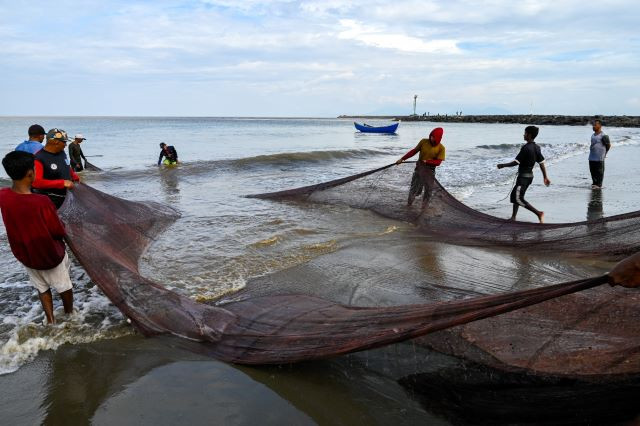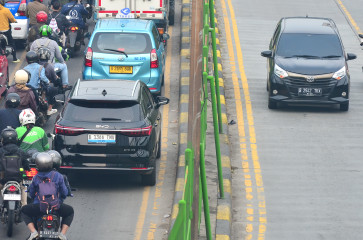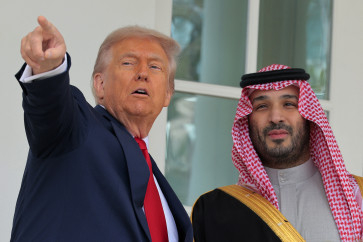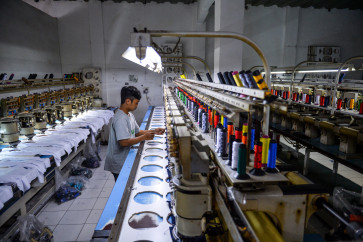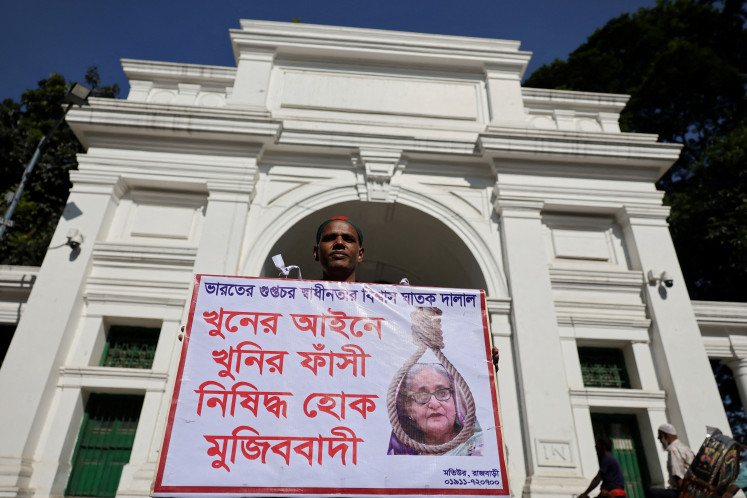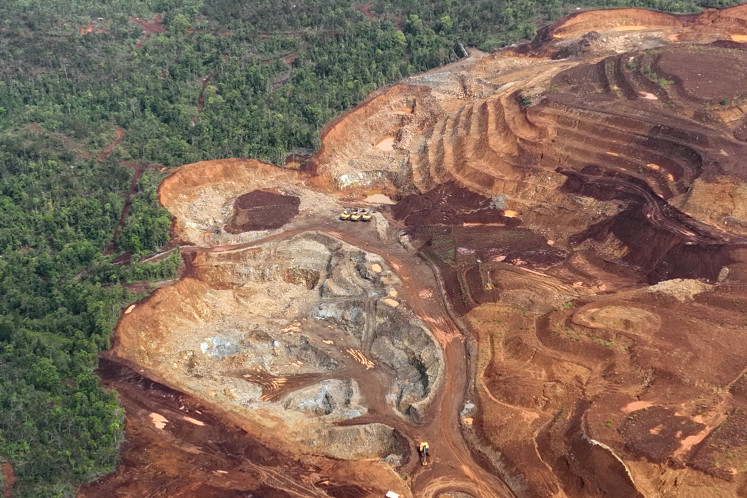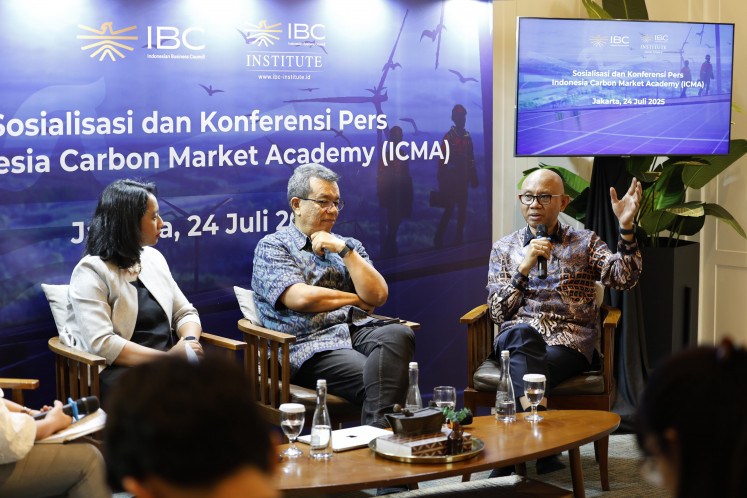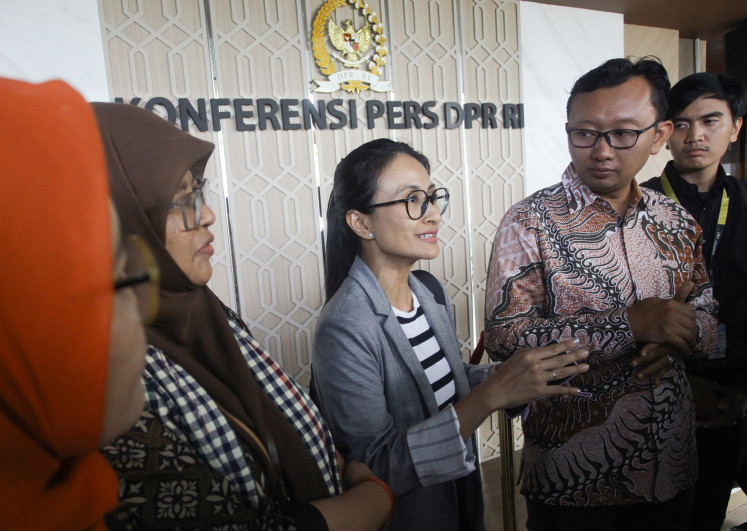Popular Reads
Top Results
Can't find what you're looking for?
View all search resultsPopular Reads
Top Results
Can't find what you're looking for?
View all search resultsProtecting high-value potentials of Indonesian seas
Indonesia has an estimated annual potential of 100 million tonnes of aquaculture production; however, currently, only about 16 percent of this is being utilized.
Change text size
Gift Premium Articles
to Anyone
T
he Indonesian Seas Large Marine Ecosystem (ISLME), covering the territorial waters of Indonesia (98 percent) and Timor-Leste (2 percent), is a wealth of resources and offers a valuable ecosystem of goods and services, economic activities, and tourism opportunities.
For coastal households and small-scale fishers/farmers depending on it (comprising 95 percent of 2.2 million fishers in Indonesia and 100 percent in Timor-Leste), the ISLME is an instrumental source of protein, livelihood and income diversification.
ISMLE contributes to Indonesia’s global success as one of the largest fisheries producers.
According to the 2021 data from the Indonesian Marine Affairs and Fisheries Ministry statistics 5.2 million tonnes of high-value commercial species, including tuna, sardines, anchovy, mackerel and various types of reef and demersal fishes, come from the region. Indonesia ranks second globally in aquaculture, producing seaweed, shrimp, grouper, snapper, and milkfish.
According to the State of World Fisheries and Aquaculture 2020 report from the Food and Agriculture Organization of the United Nations (FAO), seaweed farming had increased in the country by over 130 percent between 2010 and 2018, contributing to 30 percent of the world’s total population.
A 2020 report from the ministry showed that through ISLME, the country has an estimated annual potential of 100 million tonnes of aquaculture production; however, currently, only about 16 percent of this is being utilized. This translates to over 7 million jobs through direct and indirect employment (Hatfield, 2021).
Despite its own challenges, Timor-Leste is boosting its own aquaculture sector. In its effort to support household income and food security, the country is promoting hatcheries and skills and strengthening facilities and infrastructure.
An archipelago, Indonesia boasts over 17,000 islands and the world’s longest coastlines with the highest coral diversity. From a tourism perspective, Indonesia has promising long-term prospects for marine and coastal tourists.
Unfortunately, these valuable resources are facing threats. The long-term sustainability of the ISLME is compromised due to climate change, population growth, overfishing to meet huge market demands, rampant illegal, unreported and unregistered (IUU) fishing, coastal land conversion, sea and land-based pollutants, and poor compliance to policies and regulations.
Recognizing the impact of these challenges, Indonesia and Timor-Leste have demonstrated strong commitments to protect the region’s rich resources and aid the growing threats to its sustainability. Through the Global Environmental Facility (GEF)-supported and FAO-implemented ISLME project, the strong collaboration between the countries has brought two crucial documents, the Transboundary Diagnostic Analysis (TDA) and the Strategic Action Program (SAP).
The TDA identifies five primary environmental concerns in the region: declining fishery and aquaculture productivity, loss of marine habitats, pollution, biodiversity loss, and climate change impacts.
The SAP, endorsed on Jan. 16 in Jakarta, aims to address these concerns systematically at the national, bilateral, and transboundary levels to address these concerns.
The SAP reflects both countries’ priorities to strengthen policy and regulation, stakeholders’ capacity for Ecosystem Approach to Fisheries Management and Aquaculture (EAFM-EAA), reliable data availability and accessibility, improved compliance, especially among SSF, empowerment of community and women and their engagement in various aspects of SAP activities: from planning, implementation to monitoring and evaluation.
The SAP also emphasizes digital transformation to protect fisheries, increase productivity, promote safety at sea, ensure accurate data collection, and build climate awareness. All these initiatives directly support the blue economy agenda of both countries.
Strong, meaningful involvement of all stakeholders: decision-makers, academia, civil society organizations, direct and indirect actors in the value chain, small fishers/farmers, and the private sector is necessary to secure the ISLME region’s valuable resources for long-term sustainable development for ensuring a resilient agrifood system, economic growth, job creation, and the wellbeing of 150 million population (Statistics Indonesia, 2022), to achieve better production, better nutrition, and a better environment and a better life, leaving no one behind.
***
The writer is Food and Agriculture Organization of the United Nations (FAO) representative in Indonesia and Timor-Leste.

